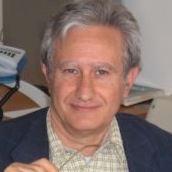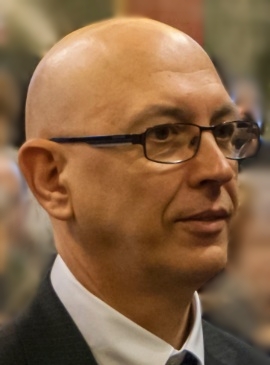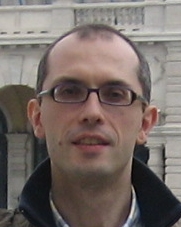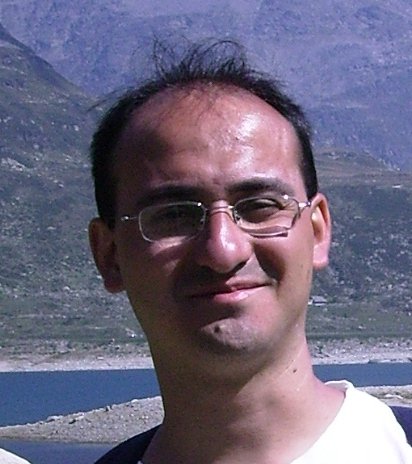Studiare
In questa sezione è possibile reperire le informazioni riguardanti l'organizzazione pratica del corso, lo svolgimento delle attività didattiche, le opportunità formative e i contatti utili durante tutto il percorso di studi, fino al conseguimento del titolo finale.
Calendario accademico
Il calendario accademico riporta le scadenze, gli adempimenti e i periodi rilevanti per la componente studentesca, personale docente e personale dell'Università. Sono inoltre indicate le festività e le chiusure ufficiali dell'Ateneo.
L’anno accademico inizia il 1° ottobre e termina il 30 settembre dell'anno successivo.
Calendario didattico
Il calendario didattico indica i periodi di svolgimento delle attività formative, di sessioni d'esami, di laurea e di chiusura per le festività.
| Periodo | Dal | Al |
|---|---|---|
| I sem. | 1-ott-2014 | 30-gen-2015 |
| II sem. | 2-mar-2015 | 12-giu-2015 |
| Sessione | Dal | Al |
|---|---|---|
| Sessione straordinaria appelli d'esame | 2-feb-2015 | 27-feb-2015 |
| Sessione estiva appelli d'esame | 15-giu-2015 | 31-lug-2015 |
| Sessione autunnale appelli d'esame | 1-set-2015 | 30-set-2015 |
| Sessione | Dal | Al |
|---|---|---|
| Sessione autunnale appello di laurea 2014 | 26-nov-2014 | 26-nov-2014 |
| Sessione invernale appello di laurea 2015 | 18-mar-2015 | 18-mar-2015 |
| Sessione estiva appello di laurea 2015 | 14-lug-2015 | 14-lug-2015 |
| Sessione autunnale appello di laurea 2015 | 25-nov-2015 | 25-nov-2015 |
| Sessione invernale appello di laurea 2016 | 16-mar-2016 | 16-mar-2016 |
| Periodo | Dal | Al |
|---|---|---|
| Vacanze di Natale | 22-dic-2014 | 6-gen-2015 |
| Vacanze di Pasqua | 2-apr-2015 | 7-apr-2015 |
| Ricorrenza del Santo Patrono | 21-mag-2015 | 21-mag-2015 |
| Vacanze estive | 10-ago-2015 | 16-ago-2015 |
Calendario esami
Gli appelli d'esame sono gestiti dalla Unità Operativa Segreteria Corsi di Studio Scienze e Ingegneria.
Per consultazione e iscrizione agli appelli d'esame visita il sistema ESSE3.
Per problemi inerenti allo smarrimento della password di accesso ai servizi on-line si prega di rivolgersi al supporto informatico della Scuola o al servizio recupero credenziali
Per dubbi o domande leggi le risposte alle domande più frequenti F.A.Q. Iscrizione Esami
Docenti
 alberto.benvegnu@univr.it
alberto.benvegnu@univr.it
 bruno.gobbi@univr.it
bruno.gobbi@univr.it
Ugolini Simone
 simone.ugolini@univr.it
simone.ugolini@univr.it
Piano Didattico
Il piano didattico è l'elenco degli insegnamenti e delle altre attività formative che devono essere sostenute nel corso della propria carriera universitaria.
Selezionare il piano didattico in base all'anno accademico di iscrizione.
1° Anno
| Insegnamenti | Crediti | TAF | SSD |
|---|
2° Anno Attivato nell'A.A. 2015/2016
| Insegnamenti | Crediti | TAF | SSD |
|---|
3° Anno Attivato nell'A.A. 2016/2017
| Insegnamenti | Crediti | TAF | SSD |
|---|
| Insegnamenti | Crediti | TAF | SSD |
|---|
| Insegnamenti | Crediti | TAF | SSD |
|---|
| Insegnamenti | Crediti | TAF | SSD |
|---|
Legenda | Tipo Attività Formativa (TAF)
TAF (Tipologia Attività Formativa) Tutti gli insegnamenti e le attività sono classificate in diversi tipi di attività formativa, indicati da una lettera.
Riconoscimento e recupero dell'informazione per bioinformatica (2016/2017)
Codice insegnamento
4S02716
Crediti
12
Lingua di erogazione
Italiano
Settore Scientifico Disciplinare (SSD)
INF/01 - INFORMATICA
L'insegnamento è organizzato come segue:
Teoria
Laboratorio
Obiettivi formativi
Il corso intende fornire i fondamenti teorici e applicativi della Pattern Recognition, una classe di metodologie automatiche utilizzate per il riconoscimento e il recupero di informazioni da dati biologici. In particolare verranno presentati e discussi i principali aspetti di questa disciplina: la rappresentazione, la classificazione, il clustering e la validazione. L’attenzione è rivolta principalmente alla descrizione delle metodologie piuttosto che ai dettagli dei programmi applicativi (già visti in altri corsi).
Al completamento del corso, gli studenti saranno in grado di analizzare un problema biologico utilizzando il punto di vista della Pattern Recognition; avranno inoltre le conoscenze necessarie per poter ideare, sviluppare e implementare le diverse componenti di un sistema di Pattern Recognition.
Programma
Propedeuticità consigliate: il corso ha come prerequisiti generali i corsi del I e II anno, ed in particolare nozioni di base di probabilità e statistica e analisi matematica.
Il corso si suddivide in tre parti:
PARTE 1. la prima parte è di natura strettamente metodologica, dove vengono descritte in maniera generale le diverse metodologie di rappresentazione, classificazione e clustering, i problemi sottostanti e le motivazioni che portano allo studio di queste tecniche.
PARTE 2. Nella seconda parte, più strettamente applicativa, vengono analizzati alcuni problemi bioinformatici che sono classicamente risolti con metodologie di classificazione e clustering (ad esempio l'analisi di dati di espressione genica, la segmentazione di immagini biomedicali, la determinazione di omologia remota tra proteine etc etc).
PARTE 3. Completa il corso una parte di laboratorio, nella quale verranno implementati (utilizzando il linguaggio di programmazione MATLAB) alcuni degli algoritmi visti nella parte di teoria.
Programma dettagliato
Teoria (72 h):
- Introduzione generale alla Pattern Recognition
- Rappresentazione dei dati
- Teoria della decisione di Bayes
- Classificatori generativi e discriminativi
- Validazione della classificazione
- Reti Neurali
- Hidden Markov Models
- Tecniche di clustering
- Validazione del clustering
- Applicazioni in bioinformatica
Laboratorio (36 h):
- Introduzione a matlab
- Rappresentazione dei dati e standardizzazione
- Principal Component Analysis
- Gaussiane e classificatori gaussiani
- Hidden Markov Models
Testi di Riferimento:
R. Duda, P. Hart, D. Stork Pattern Classification. Wiley, 2001
P. Baldi, S. Brunak, Bioinformatics, The Machine Learning Approach. MIT Press, 2001
A.K. Jain and R.C. Dubes, Algorithms for Clustering Data, Prentice-Hall, 1988
Modalità d'esame
Per superare l'esame gli studenti dovranno dimostrare di:
- essere in grado di descrivere i diversi componenti di un sistema di Pattern Recognition in modo preciso, organico e senza divagazioni
- saper analizzare, capire e descrivere un sistema di Pattern Recognition (o una sua parte) relativo ad un problema di tipo biologico.
L'esame consiste in:
i) una prova scritta contenente domande a risposta aperta sugli argomenti trattati nel corso
ii) una presentazione orale di un articolo scientifico pubblicato in importanti riviste di settore nell'anno 2015. L'articolo viene scelto dal candidato e approvato dal docente del corso
Le due parti dell'esame sono superabili separatamente e il voto complessivo è dato dalla somma delle valutazioni in 15esimi ottenute nelle due parti. Lo scritto si ritiene superato con un voto maggiore o uguale a 8. L’esame si ritiene superato se la somma delle parti è maggiore o uguale a 18. Ogni valutazione rimane valida per l’intero anno accademico in corso.
Materiale e documenti
-

 10. Clustering Validazione
(it, 316 KB, 11/11/16)
10. Clustering Validazione
(it, 316 KB, 11/11/16)
-

 11. Hidden Markov Models
(it, 1032 KB, 21/11/16)
11. Hidden Markov Models
(it, 1032 KB, 21/11/16)
-

 12. Reti Neurali
(it, 500 KB, 21/11/16)
12. Reti Neurali
(it, 500 KB, 21/11/16)
-

 13. Applicazioni - parte 1
(it, 6157 KB, 19/12/16)
13. Applicazioni - parte 1
(it, 6157 KB, 19/12/16)
-

 14. Applicazioni - parte 2
(it, 6974 KB, 19/12/16)
14. Applicazioni - parte 2
(it, 6974 KB, 19/12/16)
-

 7. Introduzione al Clustering
(it, 423 KB, 11/11/16)
7. Introduzione al Clustering
(it, 423 KB, 11/11/16)
-

 8. Clustering - similarità
(it, 254 KB, 11/11/16)
8. Clustering - similarità
(it, 254 KB, 11/11/16)
-

 9. Metodologie di clustering
(it, 798 KB, 11/11/16)
9. Metodologie di clustering
(it, 798 KB, 11/11/16)
-

 Istruzioni per il seminario
(it, 56 KB, 07/11/16)
Istruzioni per il seminario
(it, 56 KB, 07/11/16)
-

 SeminariAssegnati
(it, 42 KB, 25/09/17)
SeminariAssegnati
(it, 42 KB, 25/09/17)
-

 1. Introduzione
(it, 5094 KB, 03/10/16)
1. Introduzione
(it, 5094 KB, 03/10/16)
-

 2. Rappresentazione
(it, 10178 KB, 03/10/16)
2. Rappresentazione
(it, 10178 KB, 03/10/16)
-

 3. Teoria della decisione di Bayes
(it, 546 KB, 11/10/16)
3. Teoria della decisione di Bayes
(it, 546 KB, 11/10/16)
-

 4. Classificatori generativi
(it, 2444 KB, 11/10/16)
4. Classificatori generativi
(it, 2444 KB, 11/10/16)
-

 5. Classificatori discriminativi
(it, 1148 KB, 11/10/16)
5. Classificatori discriminativi
(it, 1148 KB, 11/10/16)
-

 6. Validazione dei classificatori
(it, 324 KB, 11/10/16)
6. Validazione dei classificatori
(it, 324 KB, 11/10/16)
-

 Lab 01 - Intro Matlab
(it, 2160 KB, 03/10/16)
Lab 01 - Intro Matlab
(it, 2160 KB, 03/10/16)
-

 Lab 01 - Soluzioni
(it, 1 KB, 17/10/16)
Lab 01 - Soluzioni
(it, 1 KB, 17/10/16)
-

 Lab 02 - Intro Matlab 2
(it, 1061 KB, 10/10/16)
Lab 02 - Intro Matlab 2
(it, 1061 KB, 10/10/16)
-

 Lab 02 - Soluzioni
(it, 3 KB, 17/10/16)
Lab 02 - Soluzioni
(it, 3 KB, 17/10/16)
-

 Lab 03 - Soluzioni
(it, 2 KB, 24/10/16)
Lab 03 - Soluzioni
(it, 2 KB, 24/10/16)
-

 Lab 03 - Standardizzazione, PCA
(it, 325 KB, 17/10/16)
Lab 03 - Standardizzazione, PCA
(it, 325 KB, 17/10/16)
-

 Lab 04 - Gaussiane
(it, 190 KB, 24/10/16)
Lab 04 - Gaussiane
(it, 190 KB, 24/10/16)
-

 Lab 04 - Soluzioni
(it, 4 KB, 07/11/16)
Lab 04 - Soluzioni
(it, 4 KB, 07/11/16)
-

 Lab 05 - Parzen Windows
(it, 256 KB, 07/11/16)
Lab 05 - Parzen Windows
(it, 256 KB, 07/11/16)
-

 Lab 05 - Soluzioni
(it, 5 KB, 14/11/16)
Lab 05 - Soluzioni
(it, 5 KB, 14/11/16)
-

 Lab 06 - KNN
(it, 279 KB, 14/11/16)
Lab 06 - KNN
(it, 279 KB, 14/11/16)
-

 Lab 06 - Soluzioni
(it, 23 KB, 21/11/16)
Lab 06 - Soluzioni
(it, 23 KB, 21/11/16)
-

 Lab 07 - PRTools 1
(it, 880 KB, 21/11/16)
Lab 07 - PRTools 1
(it, 880 KB, 21/11/16)
-

 Lab 07 - Soluzioni
(it, 0 KB, 28/11/16)
Lab 07 - Soluzioni
(it, 0 KB, 28/11/16)
-

 Lab 08 - PRTools 2
(it, 130 KB, 28/11/16)
Lab 08 - PRTools 2
(it, 130 KB, 28/11/16)
-

 Lab 08 - Soluzioni
(it, 0 KB, 12/12/16)
Lab 08 - Soluzioni
(it, 0 KB, 12/12/16)
-

 Lab 09 - Kmeans
(it, 306 KB, 12/12/16)
Lab 09 - Kmeans
(it, 306 KB, 12/12/16)
-

 Lab 09 - Soluzioni
(it, 1 KB, 19/12/16)
Lab 09 - Soluzioni
(it, 1 KB, 19/12/16)
-

 Lab 10 - HMM
(it, 703 KB, 19/12/16)
Lab 10 - HMM
(it, 703 KB, 19/12/16)
-

 Lab 10 - Soluzioni
(it, 277 KB, 09/01/17)
Lab 10 - Soluzioni
(it, 277 KB, 09/01/17)
-

 Lab 11 - Ripasso
(it, 268 KB, 09/01/17)
Lab 11 - Ripasso
(it, 268 KB, 09/01/17)
Tipologia di Attività formativa D e F
Insegnamenti non ancora inseriti
Prospettive
Avvisi degli insegnamenti e del corso di studio
Per la comunità studentesca
Se sei già iscritta/o a un corso di studio, puoi consultare tutti gli avvisi relativi al tuo corso di studi nella tua area riservata MyUnivr.
In questo portale potrai visualizzare informazioni, risorse e servizi utili che riguardano la tua carriera universitaria (libretto online, gestione della carriera Esse3, corsi e-learning, email istituzionale, modulistica di segreteria, procedure amministrative, ecc.).
Entra in MyUnivr con le tue credenziali GIA: solo così potrai ricevere notifica di tutti gli avvisi dei tuoi docenti e della tua segreteria via mail e a breve anche tramite l'app Univr.
Prova Finale
Alla prova finale sono riservati 3 crediti. L'esame di laurea consiste in un colloquio che può essere basato su un breve elaborato scritto, un esame orale, o un esame scritto. La forma e i contenuti dell'esame vengono concordati tra lo studente e il docente referente (relatore), il quale sarà anche membro della Commissione d'esame. Il colloquio può riguardare approfondimenti di argomenti non trattati durante la normale attività didattica, oppure può mettere in luce problematiche e metodologie affrontate durante un'attività di tirocinio. Su proposta del relatore la prova finale/elaborato può essere compilata e discussa in lingua straniera.
Il punteggio finale di Laurea è stabilito da una apposita Commissione di Laurea secondo le modalità indicate nel Regolamento di Ateneo, che esprime un giudizio finale in centodecimi con eventuale lode.
Il relatore dell'esame di laurea potrà essere un qualunque docente strutturato dell'Ateneo che soddisfa almeno uno dei seguenti requisiti: componente del Collegio Didattico del corso di laurea, oppure componente del Dipartimento di Informatica, oppure che insegna in un SSD presente nel piano del corso di laurea.
Il punteggio minimo per il superamento dell'esame finale è di 66/110. II voto di ammissione è determinato rapportando la media pesata sui CFU degli esami di profitto a 110 e successivamente arrotondando il risultato all'intero più vicino. A parità di distanza, si arrotonda all'intero superiore. Per media degli esami di profitto si intende la media ponderata sui crediti. E' previsto un incremento al massimo di 8/110 rispetto al voto di ammissione, di cui 4 punti riservati alla valutazione dell'esame di laurea da parte della commissione di esame composta da due docenti e 4 punti riservati alla valutazione del curriculum della/o studentessa/studente. La valutazione del curriculum avviene attraverso un calcolo basato sul seguente schema (che tiene conto in maniera positiva di eventuali lodi e periodi Erasmus ed in maniera negativa di eventuali anni fuori corso): se in corso: 3,5 + 0,2 * numero lodi; se fuori corso: 3,5 –0,5 * numero anni fuori corso + 0,1 * numero lodi; 1 punto ogni 3 mesi di Erasmus effettuato.
L'attribuzione della lode, nel caso di un incremento che porti ad una votazione che raggiunga o superi 110/110, è a discrezione della Commissione di Laurea nonché attribuita se il parere dei membri della commissione è unanime.
Elenco delle proposte di tesi e stage
| Stage | Area di ricerca |
|---|---|
| Correlated mutations | Argomenti vari |
Modalità di frequenza
Come riportato nel Regolamento Didattico, la frequenza al corso di studio non è obbligatoria.

 +39 045 802 7072
+39 045 802 7072




























